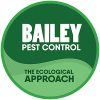Pest Control Glossary Of Terms
Learn more about pest control terms and jargon with this glossary of terms.
Pest control professionals often use quite a bit of jargon and terms that only other pest controllers would understand. So to give you a better understanding of the terms used in pest control, here’s a glossary of terms for you.
Abdomen: The last of the three major body divisions of an insect.
Action threshold: The point at which the density of a pest means it becomes important to use a pest control technique to prevent an expensive problem.
Active ingredient: The part of a pesticide that creates the toxic effect that kills a pest.
Aorta: The front-most, non-pulsating portion of the dorsal blood vessel of an insect.
Arthropod: Any of the invertebrates such as insects, spiders, or crustaceans, having an exoskeleton, a segmented body and jointed limbs.
Biological pest control: The use of living organisms, such as predators, parasitoids, and pathogens, to control pest insects, weeds, or diseases. Typically involves some human activity.
Caterpillar: The immature stage (larva) of a butterfly, moth, or sawfly.
Chemical pest control: Pest management practices which rely upon the application of synthetic or naturally-derived pesticides.
Classical biological pest control: The importation of foreign natural enemies to control previously introduced, or native, pests.
Cocoon: A silken case formed by an insect larva for pupation.
Metamorphosis: Type of insect development characterised by four distinct stages: egg, larva, pupa, and adult.
Contact poison: Used in pest control, a pesticide that is absorbed through the body wall, as opposed to one that must be ingested.
Cultural pest control: Pest management practices that rely upon manipulation of the cropping environment (e.g., cultivation of weeds that attract or feed insect pests).
Encapsulation: The surrounding of an invading body, such as the egg of a parasite, by insect blood cells and the formation of a protective capsule.
Entomopathogenic: Insect-attacking organism.
Exoskeleton: A skeleton or supportive structure on the outside of an insect body.
Fumigant: A substance which produces a gas, vapour, fume, or smoke intended to kill a pest.
Fungicide: Any substance that kills or slows the growth of a fungus.
Fungus: Any of numerous plants lacking chlorophyll, ranging in form from a single cell to a body of branched filaments. Includes the yeasts, molds, smuts, and mushrooms.
Generalist: A pest that can use a wide range of species as host or prey.
Habitat manipulation: Manipulation of agricultural areas and surrounding environment with the aim of conserving or changing populations of natural enemies (e.g., the planting of a refuge for natural enemies).
Herbicide: A substance used to kill or control weeds.
Hindwings: The second pair of wings of an insect.
Inoculative release: The release of relatively small numbers of natural enemies that are expected to colonise, reproduce, and spread naturally throughout an area.
Insect growth regulator: A substance, natural or synthetic, that controls or modifies insect growth processes.
Insecticide resistance: Genetically inherited ability to withstand doses of pesticide which would kill individuals from strains whose ancestors had not been exposed to the pesticide.
Insect resistant (plants): Tolerant of, or resistant to, insect attack (as in plants). individuals from strains whose ancestors had not been exposed to the pesticide.
Integrated pest management: An approach to the management of pests in which all available control options, including physical, chemical, and biological prest control techniques.
Larva, Larvae: The immature stage between the egg and pupa of insects having complete metamorphosis where the immature differs radically from the adult (e.g., caterpillars, grubs).
Maggot: The immature form (larva) of a fly or wasp, lacking legs and a well-developed head.
Mechanical pest control: Control of pests by physical means such as the use of screens or row covers.
Metamorphosis: A change in body form during development of an insect.
Microbial: A microscopic organism; a germ.
Microbial insecticide: A preparation of micro-organisms (e.g., viruses or bacteria) or their products used to suppress insect pest populations.
Mite: Any of several minute invertebrates belonging to the phylum Arthropoda, class Arachnida.
Natural pest control: The suppression of pest populations by naturally occurring biological and environmental agents.
Nymph: The immature stage, following hatching from the egg, of an insect that does not have a pupal stage.
Oviposition: The laying or depositing of eggs.
Ovipositor: The egg-laying apparatus of a female insect.
Parasite: An organism that lives in or on another organism (the host) during some portion of its life cycle.
Pathogen: A disease-causing organism.
Pest: An organism that interferes with human activities, property, or health, or is objectionable.
Pesticide: A substance that is used to kill, debilitate, or repel a pest.
Physical pest control: Control of pests by physical means such as heat, cold, sound waves, etc.
Pupa: The nonfeeding stage between the larva and adult in insects with complete metamorphosis.
Pupate: To transform to a pupa.
Species: A group of individuals similar in structure and capable of interbreeding and producing fertile offspring. They are different in structure from other such groups and do not interbreed with them.
Spore: A reproductive structure developing in certain bacteria and fungi which is strongly resistant to environmental influences but which will become active under suitable conditions.
Systemic insecticide: An insecticide that is absorbed into plant sap and is lethal to insects feeding on or within the treated plant.
Thorax: The insect body region behind the head which bears the legs and wings.
